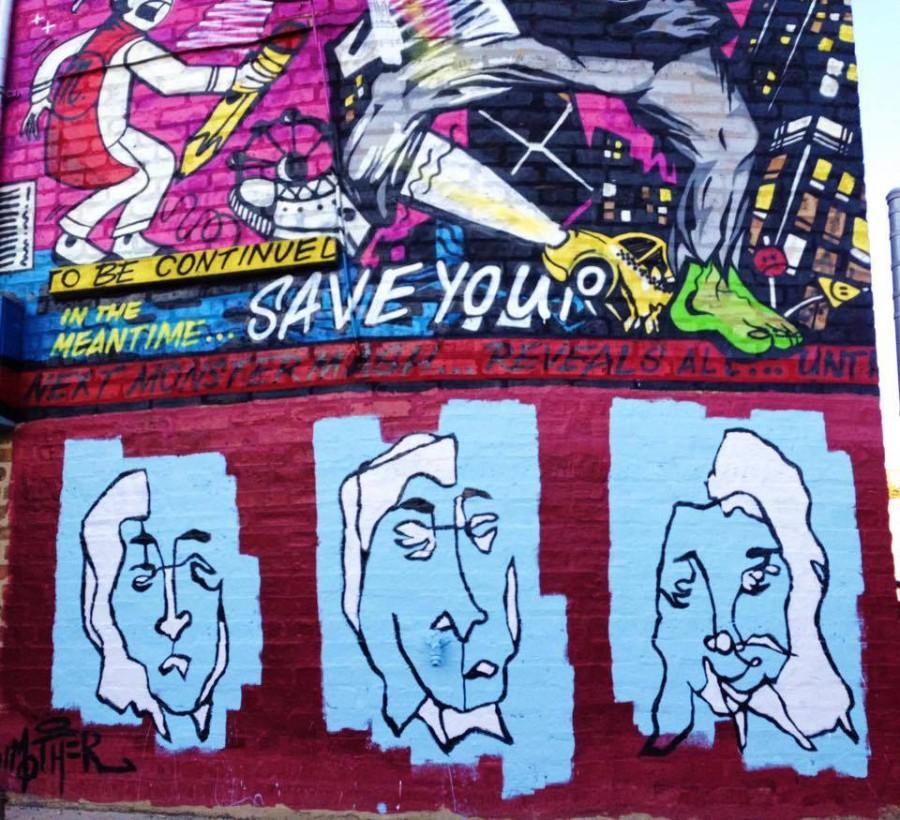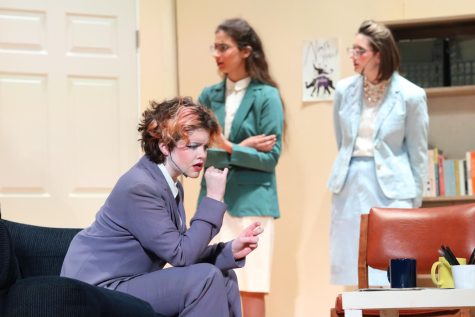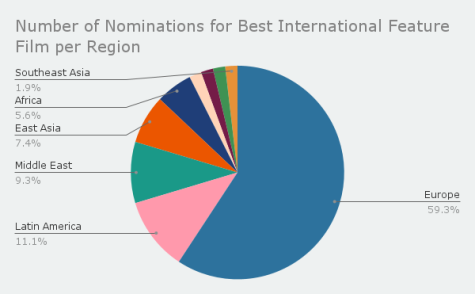New art club aims to show beauty in street art
This mural, created by Grace Coudal is currently on a building that was undergoing deconstruction. As one of her first murals, Coudal was inspired by various neighborhood street art.
December 18, 2015
Samuel Lisec, Div. 764, vice-president, is doodling or sketching while in class and imagines what people will think of his art when they see it somewhere else rather than in his notebook. He believes that once people see the true beauty in street art, they will not think of it as vandalism, but as another form to show one’s art to the world.
Street art can be found anywhere: graffiti, murals, and tags on the walls, or on abandoned trains and buildings. The origins of street art are very spotty. Jorge Martin from the Hyperallergic said that it is not known when it came to be, but some believe it came to be known around the world in the 1980s, when technology became a big part of society. Street art is a nicer way of saying graffiti.
Grace Coudal, Div. 779, vice-president, said that street art can include graffiti, tags, pieces, murals, and wheat paste and that by putting it in a public place it forces people to see the art.
Ben Bovich, Div. 776, president, had recently been interested in street art and wanted to share his passion for art with others who were also as passionate.
“I started this club [public and street art club] because I thought it would be interesting to create one about something I was passionate about and I also think it’s important to just learn the history behind street art and why it has such a bad stigma against it,” Bovich said.
While traveling, Bovich brainstormed ways to get involved school-wise, and the idea of creating the club came to mind. He then ran it by his mother and she supported the idea.
The Public and Street Art club was created this year. During club days, the club had about 100 students sign up. They have only had two club meetings, where about 20 to 25 kids showed up.
Bovich said that when adults, teachers, and parents see street art, they think the worst about it, they believe it is vandalism, and do not notice the true beauty of it.
“The club is about us trying to erase the stigma attached to public art and get people excited about putting their art in a public space,” Lisec said. “I joined the club because I was super interested in street art and I love drawing a lot.”
Another participant in the Public and Street Art club is Coudal, who has always seen graffiti on the streets as a kid, and as she entered high school, it made her more curious about the artists.
Due to this inspiration, Coudal has been working on murals before the club was created. The experience of working in a program at the Art Institute has given her more of a background, a sense in what to do when doing her own personal murals, and it also gave her the idea of making her own mural. Coudal had the amazing opportunity to work on her mural with some professionals like this guy, Brainkiller, and was able to put it up next to theirs.
Creating public art that also conveys a message interests Bovich, and that is what he hopes his club will do by improving the social stigma on street art. The students hope that this club can open the eyes of other people, and see what they see in street art.
Bovich’s mother was really worried about him starting this club after a while because she thought that it was
going to do with something illegal, but what they’re really going to be focusing on is being able to do legal stuff.
The president and vice-presidents hope to be able to sell shirts to spread the word around about their club. “Like who wouldn’t want a shirt with graffiti on it,” said Coudal. Their meetings, which happen on Thursdays, are open to everyone and anyone who wishes to stop by in Room 445, Ms. Faletto’s room.











